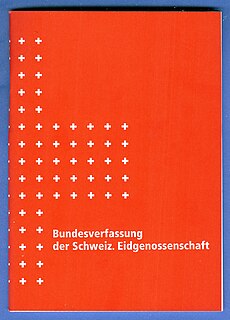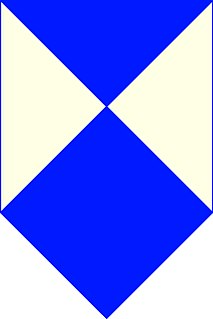Related Research Articles

The Federal Chancellor is the head of the Federal Chancellery of Switzerland, the oldest Swiss federal institution, established at the initiative of Napoleon in 1803. The officeholder acts as the general staff of the seven-member Federal Council. The Chancellor is not a member of the government and the office is not at all comparable to that of the Chancellor of Germany or the Chancellor of Austria.

Chillon Castle is an island castle located on Lake Geneva, south of Veytaux in the canton of Vaud. It is situated at the eastern end of the lake, on the narrow shore between Montreux and Villeneuve, which gives access to the Alpine valley of the Rhône. Chillon is amongst the most visited medieval castles in Switzerland and Europe. Successively occupied by the House of Savoy then by the Bernese from 1536 until 1798, it now belongs to the State of Vaud and is classified as a Swiss Cultural Property of National Significance. The Fort de Chillon, its modern counterpart, is hidden in the steep side of the mountain.

The Federal Assembly, also known as the Swiss parliament, is Switzerland's federal legislature. It meets in Bern in the Federal Palace.
The General is an office and rank in the armed forces of Switzerland. It is held by the commander-in-chief of the Army in time of war only. Under the Swiss Constitution, he must be elected by the Federal Assembly, assembled as the United Federal Assembly, specifically for the purpose of taking on the war-time responsibilities.

Monument historique is a designation given to some national heritage sites in France. It may also refer to the state procedure in France by which National Heritage protection is extended to a building, a specific part of a building, a collection of buildings, garden, bridge, or other structure, because of their importance to France's architectural and historical cultural heritage. Both public and privately owned structures may be listed in this way, as well as movable objects. As of 2012 there were 44,236 monuments listed.

Onyx is a Swiss intelligence gathering system maintained by the Federal Intelligence Service - Nachrichtendienst des Bundes (NDB). The costs of the system are not public, but the amount of 100 million Swiss francs has been mentioned several times, in particular in 2000 by Werner Marti, SP deputy to the National Council (Switzerland). In March 2005, journalist Urs Paul Engeler estimated that the costs reached 400 million CHF. The Onyx system was launched in 2000, originally under the name SATOS-3, and was completed in late 2005.
A nature park, or sometimes natural park, is a designation for a protected natural area by means of long-term land planning, sustainable resource management and limitation of agricultural and real estate developments. These valuable landscapes are preserved in their present ecological state and promoted for ecotourism purposes.
The Federal Inventory of Landscapes and Natural Monuments in Switzerland aims to protect landscapes of national importance. The inventory is part of a 1977 Ordinance of the Swiss Federal Council implementing the Federal Law on the Protection of Nature and Cultural Heritage.
The Federal Inventory of Amphibian Spawning Areas is part of a 2001 Ordinance of the Swiss Federal Council implementing the Federal Law on the Protection of Nature and Cultural Heritage. The inventory includes spawning areas of amphibians of national importance in Switzerland. The inventory includes permanent and temporary sites.

Swiss law is a set of rules which constitutes the law in Switzerland.
The Quebec Cultural Heritage Directory is an online cultural heritage knowledge dissemination tool for the province of Quebec. The directory is maintained by the province's Ministry of Culture and Communications.

The Swiss Agency for the Protection of Cultural Property defines measures to protect cultural property against damage, destruction, theft and loss. For this purpose, a legal basis has been established at the national level and international agreements have been made that oblige Switzerland to respect and support the protection of cultural property not only on its own territory but also on the sovereign territory of other state parties.

The Castle of Saint-Saphorin-sur-Morges, also called Mestral Castle, is a castle in the municipality of Echichens of the Canton of Vaud in Switzerland. It is a Swiss heritage site of national significance.

A Zone naturelle d'intérêt écologique, faunistique et floristique, abbreviated as ZNIEFF, is a type of natural environment recognized by France.

The environmental movement in Switzerland is represented by a wide range of associations.
References
- ↑ RS 451 Art. 4 Catégories d’objets (Loi fédérale sur la protection de la nature et du paysage)
- ↑ RS 451 Art. 9 Autres expertises (Loi fédérale sur la protection de la nature et du paysage)
- ↑ RS 451 Art. 1 But (Loi fédérale sur la protection de la nature et du paysage)
- ↑ "SFFN - Conservation de la nature - Législation". Archived from the original on 2007-09-27. Retrieved 2009-11-17.
- ↑ RS 451.1 Ordonnance sur la protection de la nature et du paysage